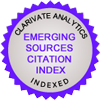Maksimum ve kalıcı yer değiştirme talepleri açısından TBDY 2018 ve DBYBHY 2007 deprem yönetmeliklerinin karşılaştırılması
Ahmet DemirBolu Abant İzzet Baysal Üniversitesi, Mühendislik Fakültesi, İnşaat Mühendisliği BölümüDeprem yönetmelikleri, yapılan bilimsel çalışmalar sonucunda elde edilen bilgiler ve meydana gelen depremler sonrasında yapı davranışı ile ilgili gözlemler dikkate alınarak güncellenmektedir. Türkiyede, Deprem Bölgelerinde Yapılacak Binalar Hakkında Yönetmelik (DBYBHY) yerine 2019 yılından itibaren Türkiye Bina Deprem Yönetmeliği (TBDY) yürürlüğe girmiştir. Her iki yönetmelikte de yapıların tasarım ve/veya değerlendirilmesi için doğrusal olmayan dinamik analiz ile ilgili tanımlamalar bulunmaktadır. Bununla birlikte, TBDYde hem tasarım spektrumunun tanımı ve hem de Türkiyede bulunan herhangi bir konum için tasarım spektrumunun elde edilmesi amacıyla kullanılan spektral parametreler değişmiştir. Bu değişikliklerin ötelenme taleplerine etkisinin değerlendirilmesi amacıyla, farklı periyot ve yatay dayanım oranına sahip tek serbestlik dereceli (TSD) sistemlerin doğrusal olmayan dinamik analizleri hem TBDY hem de DBYBHYye göre yapılmış ve maksimum ötelenme ve kalıcı ötelenme taleplerinin ortalaması ile bu taleplere ait saçılımlar karşılaştırılmıştır. Bu amaçla toplamda 72 farklı TSD sistem dikkate alınmış, bu sistemlerin analizi amacıyla TBDY ve DBYBHY (farklı deprem bölgesi, zemin sınıfı ve şehirler) ile uyumlu olarak sırasıyla 84 ve 168 adet ivme kaydı seti kullanılmıştır. Sonuçlar incelendiğinde, a) zemin sınıfına ve şehirlere göre tasarım spektrumlarının değiştiği, b) maksimum ötelenme ve kalıcı ötelenme taleplerinin deprem düzeyi ve zemin sınıfına bağlı olarak değiştiği c) bazı şehirlerde TBDY ile elde edilen taleplerin, bazı şehirlerde ise DBYBHY ile elde edilen taleplerin daha büyük olduğu, d) taleplerin set içerisindeki saçılımların yüksek olduğu ve e) setler arası saçılımın maksimum ötelenme talebi için düşük kalıcı ötelenme talebi için ise yüksek olduğu görülmüştür.
Anahtar Kelimeler: DBYBHY, TBDY, Tasarım spektrumu, Dinamik analiz, ötelenme talebiComparisons of TBEC 2018 and TEC 2007 seismic codes by means of maximum and residual displacement demands
Ahmet DemirBolu Abant İzzet Baysal University, Engineering Faculty, Civil Engineering DepartmentSeismic codes are updated by taking into account the information obtained as a result of scientific studies and the observations after earthquakes about the behavior of the building. In Turkey, the Turkish Building Earthquake Codes (TBEC) has also been published in 2019, instead of the Turkish Earthquake Codes (TEC). Both seismic codes contain definitions for nonlinear dynamic analysis for the design and/or evaluation of structures. However, in TBEC, both the definition of the design spectrum and the spectral parameters used to obtain the design spectrum for any location in Turkey have changed. In order to evaluate the effects of these changes on the drift demands, nonlinear dynamic analyzes of single degree of freedom (SDOF) systems with different periods and lateral strength ratios were made according to both TBEC and TEC. Then, mean of the maximum and residual drift demands and the scattering of these demands were compared. For this purpose, totally 72 different TSD systems were considered. For the analysis of these systems, 84 and 168 ground motion record sets were used according to TEC and TBEC (different earthquake zones, ground class and cities), respectively. When the results are examined, it is seen that a) the design spectrums change according to the ground class and cities, b) the maximum and residual drift demands change depending on the earthquake levels and soil classes, c) in some cities, the demands obtained with TBEC, and in some cities, the demands obtained with TBEC are greater, d) drift demands scattering within the set is high and e) the scattering between the sets is low for the maximum drift demand and high for the residual drift demand.
Keywords: TEC, TBEC, Design spectrum, Dynamic analysis, drift demandsSorumlu Yazar: Ahmet Demir, Türkiye
Makale Dili: Türkçe






